The Second Serbian International Conference on Applied Artificial Intelligence (SICAAI).
It is our great pleasure to invite you to the Second Serbian International Conference on Applied Artificial Intelligence (SICAAI).
The Conference will be held in Kragujevac, Serbia, on May 19th – 20th, 2023. Kragujevac is the fourth largest city in Serbia and the administrative center of the Šumadija District. Today, the city represents a modern industrial and commercial center of the country. It enjoys the status of an education center housing the University of Kragujevac, one of the region’s largest higher education institutions.
The Conference will be held on the premises of the Rectorate of University in Kragujevac (Jovana Cvijića bb, 34000 Kragujevac, Serbia) and online via Big Blue Button service of the University of Kragujevac, on the following LINK.
Kragujevac
Kragujevac has historic significance as the first capital of modern Serbia. It bears an industrial tradition of two centuries and an openness to adopt new ideas and businesses. Kragujevac is also a home of experienced and industrious workers, educated young people, rich cultural heritage, and optimism, above all.
Today, Kragujevac is a leader of economic development of Šumadija district and a community of successful people. Kragujevac supports and represents the central hub of industrial and economic development, administrative, educational, health, cultural and sport activities in the Šumadija district.
Conference
AAI2023 will provide an exceptional Serbian and international forum to share the state-of-the-art research knowledge and results on the innovative theories, methodology and applications of artificial intelligence and its sub-domain like deep learning, machine learning in different areas such as medicine, economy, education, law, smart city, government, industry etc. AAI2023 welcomes abstracts in all sub-areas of artificial intelligence. Moreover, the conference aims to provide a platform for researchers and practitioners for both academia and industry to share the information about cutting-edge developments in the field of artificial intelligence.
This conference intends to emphasize a research connection, therefore, the authors are invited to highlight the advantages of information technologies in various domains. Innovative research ideas on how to solve problems using artificial intelligence, both in R&D and real-time applications are welcome. Papers describing the advanced prototypes, systems, methodologies, tools and techniques and general survey papers, which indicates future directions, are also encouraged.
Important Dates
- Submission of scientific contributions (extended abstracts on two or four pages) deadline: April 24th, 2023
- Notification of acceptance deadline: April 30th, 2023
- Registration fee payment deadline: May 5th, 2023
Call for Mini-Symposia
Call for mini-symposium is still open until February 15th, 2023. Please download and use mini-symposium template proposal by clicking LINK (docx) or LINK (LaTex). Each mini-symposium may have one or more organizers. Organizers have to attend the conference and chair their session. Each mini-symposium should include at least 3 presentations. It is recommended that the Organizers invite a senior researcher to give a ‘mini-symposia keynote’. Each presentation will be scheduled for 15 minutes including questions and answers. The organizers are responsible to contact the speakers to participate and present in their session. The abstracts will be submitted and reviewed via the conference system. Please note that the AAI 2023 Conference program can have only one presentation per person. Mini-symposium proposals should be submitted by email to: AAI2023@kg.ac.rs.
Mini-Symposia
- MS1: AI in Energy and Environmental Science
Organizer: Boban Stojanović, Faculty of Science, University of Kragujevac, Kragujevac, Serbia; - MS2: AI & IOT for Smart Industry
Organizers: Milovan Medojević, The Institute for Artificial Intelligence R&D of Serbia, EnergyPulse DOO, Novi Sad, Serbia; Aleksandar Rikalović, The Institute for Artificial Intelligence R&D of Serbia, Faculty of Technical Sciences, University of Novi Sad, Novi Sad, Serbia; - MS3: Artificial Intelligence in Computer Vision and Remote Sensing
Organizers: Marko Pavlović, The Institute for Artificial Intelligence R&D of Serbia, Novi Sad, Serbia; Slobodan Ilić, The Institute for Artificial Intelligence R&D of Serbia, Novi Sad, Serbia; Dubravko Ćulibrk, The Institute for Artificial Intelligence R&D of Serbia, Faculty of Technical Sciences, University of Novi Sad, Novi Sad, Serbia;
Organizers
- University of Kragujevac
- Serbian Academy of Sciences and Arts
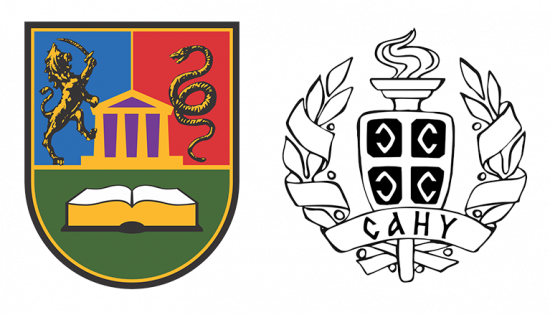
Technical Co-sponsor
- Serbia and Montenegro chapter of IEEE Computer Society

Sponsor

Supported by
- Ministry of Science, Technological Development and Innovation of the Republic of Serbia
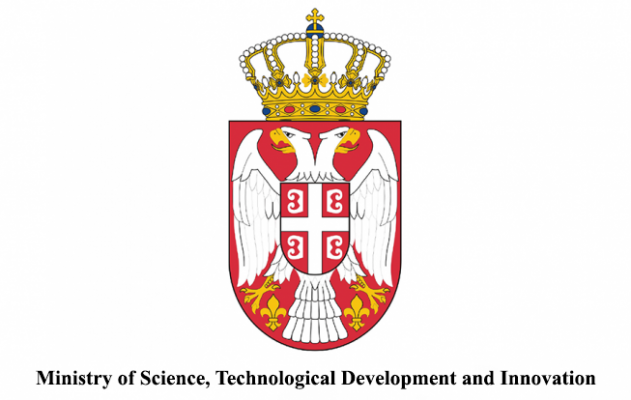
Plenary Speakers
- Prof. Dan Shechtman – 2011 Nobel Laureate in Chemistry, Philip Tobias Professor of Materials Science at the Technion – Israel Institute of Technology, an Associate of the US Department of Energy’s Ames National Laboratory, and Professor of Materials Science at Iowa State University; Title: Technological Entrepreneurship – Key to World Prosperity and Peace
- Prof. Zipora Shechtman – University of Haifa, Israel; Title: The Psychological Aspects of Entrepreneurship
- Prof. Avi Mendelson – The Technion, Israel Institute of Technology; Title: Opportunities and Challenges of the ChatGPT Era
- Prof. Zoran Bosnić – University of Ljubljana, Slovenia; Title: Implementation Challenges of Interdisciplinary Machine Learning Projects
- Prof. Zlatan Car – University of Rijeka, Croatia; Title: Deep Learning – New Paradigm in AI Medical Imaging/What Now?
- Prof. Dimitrios Fotiadis – University of Ioannina, Greece; Title: Big Data and Medical Imaging Data Space
- Prof. Veljko Milutinović – Life Fellow of the IEEE, Washington, D.C., USA Member, a Former Trustee and Treasurer, Academia Europaea, London, GBR Founding Member, Serbian National Academy of Engineering, Beograd, SRB Foreign Member, Montenegrin National Academy of Sciences and Arts, Montenegro; Title: DataFlow SuperComputing for BigData DeepAnalytics
- Prof. Miodrag J. Mihaljević – Research Professor and the Deputy Director with the Mathematical Institute, Serbian Academy of Sciences and Arts, Belgrade, Serbia; Title: Artificial Intelligence for Blockchain Technology and Vice Versa
- Prof. Emil Jovanov – Electrical and Computer Engineering Department, University of Alabama in Huntsville, USA; Title: Embedding Artificial Intelligence into Wearable IoMT Systems
Prof. Dan Shechtman
2011 Nobel Laureate in Chemistry, Philip Tobias Professor of Materials Science at the Technion – Israel Institute of Technology, an Associate of the US Department of Energy’s Ames National Laboratory, and Professor of Materials Science at Iowa State University
Title: Technological Entrepreneurship – Key to World Prosperity and Peace
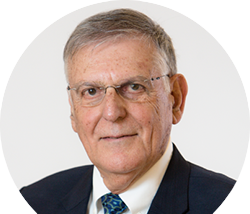
Abstract
Over the past several decades we witness a shift toward national policies that encourage innovation and technological entrepreneurship. The call for more investment in entrepreneurship echoes around the globe as it becomes clear that except for a few countries, natural resources like oil and minerals are not enough to sustain economies, while human ingenuity is indeed the most important, sustainable natural resource.
So, is there hope for everybody in the world to improve their lives? Can technological entrepreneurship be motivated and taught so that generations of determined entrepreneurs will build up thriving economies? The clear answer to both questions is yes and it all starts with education in general and scientific-technical education in particular. This is a long process, but there is a way to expedite it – start with the already educated engineers and scientists. These are the first candidates to open entrepreneurial endeavors. They can make the difference, but need motivation, instruction and encouraging economic environment that fosters creation of successful start-ups. These pioneering entrepreneurs can then serve as role models to others. The name of the game is motivation. If this nucleus of capable people is motivated toward entrepreneurship, a process can start that will make a huge difference in a life of a country. Living examples to countries that underwent this process are China, Israel and Singapore whose societies shifted from agrarian to industrial within several decades thanks to the spirit of entrepreneurship and the motivation to create high-tech industries led and guided by individual engineers and scientists.
In my talk I will explain the need for technological entrepreneurship and describe my involvement in turning Israel into a startup nation.
Biography
Prof. Dan Shechtman was born in Tel Aviv, in what was then the British Mandate for Palestine. He earned his PhD in materials science from the Technion Israel Institute of Technology in Haifa in 1972. Shechtman has been associated with Technion since that time, but has also spent time abroad. He made his Nobel Prize-awarded discovery at Johns Hopkins University in Baltimore, Maryland in the early 1980s. Shechtman has also been connected with Iowa State University in Ames in the United States since 2004. He is married with four children.
Prof. Zipora Shechtman
University of Haifa, Israel
Title: The Psychological Aspects of Entrepreneurship

Abstract
Entrepreneurship and psychology are interrelated, as entrepreneurs are affected by cognitive, affective, and environmental factors. To be able to increase the number of entrepreneurs we need to understand their unique characteristics and how those are developed. Cognitive abilities, education, special expertise, are important pre-conditions, but not enough. A good idea is also necessary but not enough.
Motivation is an important factor, but dependent on a number of personality traits (e.g. self-efficacy), without which, a person will not be able to carry out his/her best idea. The necessary traits are developed in a unique family climate and appropriate education style. To enhance entrepreneurship we need to start early in the life of children, educate parents, establish a empowring school system, and develop a social spirit of entrepreneurship.
Biography
Prof. Zipora Shechtman (Professor Emerita) is the chair of the Group Counseling M.A Program, at University of Haifa, Israel. She has conducted groups and trained group counselors for over thirty years. Her main research interst is in group counseling and group psychotherapy with children and adolescents who demonstrate social, emotional and behavioral difficulties. She is the author of three books, over 100 papers and book chapters and a fellow of the American Psychological Association (APA), the American Group Psychotherapy Associatin (AGPA) and the Society for Aggressive Behavior. She served as an associate editor on the Group Psychotherapy jouranl, Group Dynamics: Theory, Research, and Practice journal and on the editorial board for all the major journal on groups, including The Journal for Specialists in Group Work, The International Journal of Group Psychotherapy & Group Dynamics: Theory, Research, and Practice. She received several research awards, inclufding the 2012 Excellence for resrearch on groups grom APA (Division 49).
Prof. Avi Mendelson
The Technion, Israel Institute of Technology
Title: Opportunities and Challenges of the ChatGPT Era

Abstract
ChatGPT presents a new generation of search engines based on machine learning mechanisms capable of answering complex questions such as “write me an essay” or “please solve the following exam”. On the one hand, such capability (and we can assume that it will continue to improve over time) seems to be the ultimate tool students (and engineers) need, but on the other hand, such tools present many new challenges.
My talk will mainly focus on such tools’ educational, sociological, and political aspects. I hope it could be served as a call for action for an interdisciplinary discussion on ‘can we prevent people that misuse advanced technologies to control future societies’.
Biography
Prof. Avi Mendelson is a Professor at the Technion and an IEEE fellow.
He has vast experience in both Industry and Academia.
His primary research interests are computer architecture, machine learning, and hardware security.
He served as a member of the ACM-Europe Council, IEEE Computer Society Board of Government, and he also served as a second VP of the IEEE Computer Society.
Prof. Zoran Bosnić
University of Ljubljana, Slovenia
Title: Implementation Challenges of Interdisciplinary Machine Learning Projects
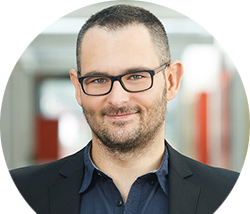
Abstract
Artificial intelligence and machine learning bring novel methodological approaches for different applications, including risk-sensitive medical applications. However, applying and optimizing machine learning algorithms or proposing novel customized methods represent only the first part of the entire story, in which the second part cannot be neglected – it comprises organizational challenges, communication gaps between involved parties, explainability of the black-box machine learning models and validation issues in practice. The talk will first overview some recent achievements in modeling hypertrophic cardiomyopathy disease progression and predicting cognitive diseases. It will overview a set of current machine learning tools that can be used to address these tasks. Further, the talk will bring attention to challenges that persistently appear when implementing machine learning applications in interdisciplinary fields, be it a medical or other financial, control, or industrial application.
Biography
Prof. Zoran Bosnić received his Ph.D. from the University of Ljubljana, Slovenia in 2007. Currently, he is the head of the Chair of Artificial Intelligence at the Faculty of Computer and Information Science, University of Ljubljana. His main research is focused on machine learning, more specifically on the development of individual prediction reliability estimates, incremental learning from data streams along with concept drift detection, recommender systems, and various machine learning applications, especially in medicine, biochemistry, and insurance. In the recent period, he was involved with several medical projects, focused on cardiomyopathy risk stratification and cognitive disease predictions. Other major recent H2020 projects include SILICOFCM (In Silico trials for drug tracing the effects of sarcomeric protein mutations leading to familial cardiomyopathy) and AgroIT (Increasing the efficiency of farming through on open standards).
He serves as an editorial board member for two SCI journals: Intelligent Data Analysis (IDA) and ComSIS. His interdisciplinary teaching interests combine leading several courses: Introduction to Artificial Intelligence, Functional Programming, Computer Communications, Scientific publishing, and Incremental Learning from Data Streams. He received several teaching awards and an Honorary diploma for outstanding pedagogical and research achievements from the University of Ljubljana.
Prof. Zlatan Car
University of Rijeka, Croatia
Title: Deep Learning – New Paradigm in AI Medical Imaging/What Now?

Abstract
Recently, ChatGPT (Generative pre-training transformer) is often mentioned as a tool for generating real text, i.e. text that, without a deeper analysis, is very difficult to distinguish from the one written by a human. Generative models of this type can also generate other forms of data – such as audio recordings and images. When generating images, there are several models available, such as Dall-E 2 (offered by OpenAI – authors of the ChatGPT model), Wombo Dream, Midjourney, and many others. These models are accessed through a web browser, usually with restrictions and/or payment per generated image, while there are also models that can be run on your own architectures – such as Big Sleep AI developed in Python, which is not only freely available, its source code is already freely available. Such models are based on the so-called generative deep convolutional artificial neural networks (DCANN). Such methods are historically and currently in use for image classification purposes. An image is fed to the “input” of the neural network, which passes through the layers of the network in which convolution operations take place with filters whose values are adjusted, and at the output they give the intended class of the image. Generative models, like the ones mentioned earlier, work in an inverse way – where based on the input of the class of the desired image, an image is generated from a field of random values. Examples of such applications exist from before, such as “On urinary bladder cancer diagnosis: Utilization of deep convolutional generative adversarial networks for data augmentation”, which, based on the numerical input of class values, can generate an image representing healthy or diseased tissue. Generative models like this one are proving to be an important tool in medicine-focussed machine learning model training, as obtaining a dataset that is both numerous (thousands of images), balanced (different image classes, e.g. healthy vs. diseased tissue), and high-quality can be almost impossible. This is especially notable when rare diseases are discussed. In cases where a comparatively poor dataset is provided, it can be augmented using such advanced image generation techniques. For modern image generators, users want to enable simpler input, so generation models are combined with an additional artificial intelligence model for the interpretation of “spoken” language, which enables text input (e.g. “yellow submarine”, “dog running through a forest”) instead numerical representations of the class. Models combined in this way are called CLIP (contrastive language-image pretraining) models. Since the models are “general”, i.e. they are expected to be able to generate a large number of different subjects in the images, they require a large amount of images (e.g. Dall-E 2 is trained with more than 400 million image-text pairs), which are retrieved from the Internet, where tags, titles and descriptions are taken along with the image as text. This approach of obtaining a vast amount of images automatically is significantly different from a careful, curated process of image collection for the model training today – in which images are checked by experts in the given field to assure their quality. The question arises of the need for such a curated process in data collection, especially field-wise. Should images used for model training in fields like medicine be carefully validated, while this is unnecessary for different fields of application? Although this is the only realistic way to collect such a large number of images, many artists raise the ethical question of the right to use their images – that is, are they actually responsible for the images generated by the artificial intelligence model, since their images are used to train these networks?
Biography
Prof. Zlatan Car is a professor at the Faculty of engineering University of Rijeka, Department of Automation and Electronics. From 2010 till 2018 he was the head of the Center for Advanced Computing and Modeling at the University of Rijeka, and in 2013-2017 he was vice-rector for ICT at the University of Rijeka. His research focus is the development and implementation of artificial intelligence algorithms and advanced modeling. He received his doctorate from the University of Kobe, Japan, and also completed a post doc. at the same university. Prof. Car has published over 200 papers and contributed book chapters on advanced modeling, artificial intelligence and complex systems. In 2016, he received the State Prize of the Republic of Croatia for Science, the Annual Prize for the Popularization and Promotion of Science, Scientific Field, Technical Sciences. Prof. Car currently leads at Faulty of Engineering the AI research group as part of the National Center of Research Excellence for Data Science and Advanced Cooperative Systems (funded by the EU), and at the university level he is in charge of the Competence Center for Smart Cities (as the head of the AI research group, funded by the EU ) and leads the Erasmus+ project no. 2021-1-HR01-KA220-HED-000031177, ” Introduction of joint short – style ICT courses for better employability of students and graduates (WICT)” . Among others, he was the main researcher and project manager of the following projects: “Use of Regressive Artificial Intelligence {Al) and Machines Learning (ML) Methods in Modeling of COVID-19 spread – COVIDAi ” ( Ref . no. 305.6019-20), Central European Initiative ; “Development – Education Center for the Metal Industry – Metals Core” , a project financed by the European Fund for Regional Development, project member; Responsible for the establishment of the department for the advanced technology system (budget 5 million euros); Danube Transnational Program, ” High-Performance Computing for Effectiveness Innovation in the Danube Region ” , Multilateral international project, project manager at a partner institution (budget 2 million euros); Erasmus + KA2 Call, “Development and Implementation of System for Performance Evaluation for Serbian HEIS and Systems – PESHES“ , Multilateral international project, project manager at the partner institution (budget a million euros); IPA Adriatic program of cross-border cooperation, ADRIATinn -a cross -border business ecosystem in the Adriatic area , supporting energy , bioeconomy and well-being SMEs to innovate , network and grow .” (total budget 4.7 million EUR).
He is currently an active member of the National Committee for Strategic Research Infrastructure of the Ministry of Science and Education of the Republic of Croatia, and a delegate of the Republic of Croatia in the Horizon Europe Program Committee at the European Commission in charge of policy development and evaluation of scientific infrastructure.
Prof. Dimitrios Fotiadis
University of Ioannina, Greece
Title: Big Data and Medical Imaging Data Space
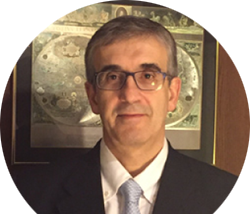
Abstract
Big data analytics in healthcare are constantly transforming the way we analyze and interpret medical images, fostering significant advancements in clinical decision-making and improving patient outcomes. As medical imaging generates vast amounts of data that usually remain scattered among many repositories and clinical centres, there is an increasing need to render these data easily accessible to clinicians, researchers and innovators to drive medical research and innovation, and ultimately lead to more personalized and effective healthcare. Furthermore, the development of centralized data spaces consist the cornerstone for the tight collaboration between experts with different disciplinaries.In this regard, building medical image data spaces is contingent on establishing innovative data-based healthcare concepts. Medical images data spaces can revolutionize healthcare by enabling hospitals, patients, and image requestors to obtain patient-centric data in a distributed manner by providing a secure, accessible, and interoperable platform for storing, sharing, and analyzing medical images. As technology continues to advance, big data and data spaces are expected to play an increasingly important role in the field of medical imaging.
Biography
Prof. Dimitrios I. Fotiadis, received the Diploma degree in chemical engineering from the National Technical University of Athens, Athens, Greece, and the Ph.D. degree in chemical engineering and materials science from the University of Minnesota, Minneapolis. He is currently a Professor of Biomedical Engineering in the Department of Materials Science and Engineering, University of Ioannina, Ioannina, Greece, where he is also the Director of the Unit of Medical Technology and Intelligent Information Systems, and is also an Affiliated Member of Foundation for Research and Technology Hellas, Biomedical Research Institute. He was a Visiting Researcher at the RWTH, Aachen, Germany, and the Massachusetts Institute of Technology, Boston. He has coordinated and participated in more than 250 R&D funded projects (in FP6, FP7, H2020, and national Projects), being the coordinator (e.g. INSILC, TAXINOMISIS, HOLOBALANCE, CARDIOCARE, DECODE, etc.) and Technical coordinator (e.g. SMARTOOL, KARDIATOOL, TO_AITION, etc.). He is the author or coauthor of more than 350 papers in scientific journals, 500 papers in peer-reviewed conference proceedings, and more than 50 chapters in books. He is also the author/editor of 30 books. His work has received more than 23,000 citations (h-index=71). He is IEEE EMBS Fellow, EAMBES Fellow, Fellow of IAMBE, Fellow of AIAA, member of the IEEE Technical Committee of Biomedical Health Informatics, Editor in Chief of IEEE Journal of Biomedical and Health Informatics, Member of the Editorial Board in IEEE Reviews in Biomedical Engineering, Associate Editor for IEEE Open Journal in Engineering in Biology and Medicine and Computers in Biology and Medicine. His research interests include multiscale modelling of human tissues and organs, intelligent wearable/implantable devices for automated diagnosis, processing of big medical data, machine learning, sensor informatics, image informatics, and bioinformatics. He is the recipient of many scientific awards including the one by the Academy of Athens. He is the co-founder of PD Neurotechnology Ltd, UK.
Prof. Veljko Milutinović
Life Fellow of the IEEE, Washington, D.C., USA Member, a Former Trustee and Treasurer, Academia Europaea, London, GBR Founding Member, Serbian National Academy of Engineering, Beograd, SRB Foreign Member, Montenegrin National Academy of Sciences and Arts, Montenegro
Title: DataFlow SuperComputing for BigData DeepAnalytics
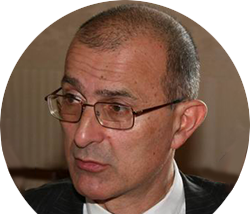
Abstract
This lecture, possibly followed by a mini-tutorial on DataFlow programming, analyses the essence of DataFlow SuperComputing, defines its advantages and sheds light on the related programming model that corresponds to the recent Intel patent about the future Intel’s dataflow processor. The stress is on issues of interest for science in general and on the problems of interest for this audience.
Acording to Alibaba and Google, as well as the open literature, the DataFlow paradigm, compared to the ControlFlow paradigm, offers: (a) Speedups of at least 10x to 100x and sometimes much more (depends on the algorithmic characteristics of the most essential loops and the spatial/temporal characteristics of the Big Data Streem, etc.), (b) Potentials for a better precision (depends on the characteristics of the optimizing compiler and the operating system, etc.), (c) Power reduction of at least 10x (depends on the clock speed and the internal architecture, etc.), and (d) Size reduction of well over 10x (depends on the chip implementation and the packiging technology, etc.). The bigger the data, and the higher the reusability of individual data items (which is typical of ML), the higher the benefits of the dataflow paradigm over the control flow paradigm. However, the programming paradigm is different, and has to be mastered.
The follow-up mini tutorial (which could be organized on-line after the symposium, for the interested faculty and students of engineering) explains the programming paradigm details, using Maxeler (in contrast with Google TPU, via Amazon AWS) as an example and sheds light on the ongoing research, which, in the case of the speaker, was highly influenced by four different Nobel Laureates: (a) from Richard Feynman it has been learned that future computing paradigms will be successful only if the amount of data communications is minimized; (b) from Ilya Prigogine it has been learned that the entropy of a computing system could be minimized if spatial and temporal data get decoupled; (c) from Daniel Kahneman it has been learned that the system software should offer options related to approximate computing; and (d) from Tim Hunt it has been learned that the system software should be able to trade between latency and precision. The follow-up mini tutorial also includes hands-on opportunities for attendees (examples related to the interests of the audience).
Biography
Prof. Veljko Milutinović (1951) received his PhD from the University of Belgrade in Serbia, spent about a decade on various faculty positions in the USA (mostly at Purdue University and more recenlty at the Indiana University in Bloomington), and was a co-designer of the DARPAs first GaAs (Gallium Arsendie) RISC microprocessor at 200MHz (about a decade before commercial efforts on the same speed) and the DARPAs first GaAs Systolic Array with 4096 processors on 200MHz (both well documented in the open literature). Later, for about three decades, he taught and conducted research at the University of Belgrade, in EE, MATH, BA, and PHYS/CHEM. Now he serves as the Chairman of the Board of IPSI Belgrade (a spin-off of Fraunhofer IPSI from Darmstadt, Germany). His research is mostly in datamining algorithms and dataflow computing, with the emphasis on mapping of data analytics algorithms onto fast energy efficient architectures. For 20 of his edited books and related publications, focused forewords or condensed wisdom were contributed by 20 different Nobel Laureates with whom he cooperated on his past industry sponsored projects. He has over 100 SCI journal papers (mostly in IEEE and ACM journals), about 2000 Thomson-Reuters citations, about 2000 SCOPUS citations, and the number of Google Scholar citations that is about 5500, with the current Google Scholar indices: h=40, i10=110, i100=10, and i400=1.
Short or long courses on the subject he delivered so far in a number of universities worldwide: MIT, Harvard, Boston, NEU, Dartmouth, University of Massachusetts at Amherst, USC, UCLA, Columbia, NYU, Princeton, Rutgers, CMU, Temple, Purdue, IU, UIUC, Michigan, Wisconsin, Minnesota, etc…
Prof. Miodrag J. Mihaljević
Research Professor and the Deputy Director with the Mathematical Institute, Serbian Academy of Sciences and Arts, Belgrade, Serbia
Title: Artificial Intelligence for Blockchain Technology and Vice Versa
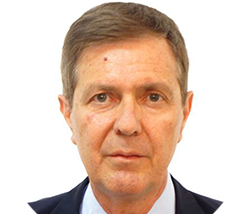
Abstract
Beside that, artificial intelligence (AI) and blockchain technology (BC) are nowadays among hottest topic within information technologies and open doors for many new applications, these two topics appear as mutually supportive. This talk yields certain illustrations of AI usefulness for analysis of BC systems as well as importance of BC for developing trustful AI based big data applications.
Biography
Prof. Miodrag J. Mihaljević is currently a Research Professor and the Deputy Director with the Mathematical Institute, Serbian Academy of Sciences and Arts, Belgrade. His main research interests include cryptology, information security and blockchain technology. He has published more than 100 research articles in the leading international journals and conference proceedings and over 200 publications in total. He is co-inventor of eight granted patents in Japan, U.S., and China. He has organized and played principal investigator roles in over ten national projects and has participated in over ten international research projects. Since 1997, he has been holding long-term visiting positions at the universities and research institutes in Japan, including The University of Tokyo, Sony Research Labs, the National Institute AIST, and Chuo University, Tokyo. In 2013, he received the National Award of the Serbian Academy of Sciences and Arts for ten years achievements. Since 2014, he has been an Elected Member of the Academia Europaea. In the years 2020, 2021 and 2022. Dr. Mihaljevic is included in the ranked list colloquially known as “World’s Top 2% Scientists” (by Elsevier and Stanford University) regarding his career achievements. He has been a Guest Editor of a few journals, and he is an Associate Editor of SN Computer Science (Springer). He is an Elected Member of the Serbian Academy of Sciences and Arts from 2021. For more information, please visit LINK
Prof. Emil Jovanov
Electrical and Computer Engineering Department, University of Alabama in Huntsville, USA
Title: Embedding Artificial Intelligence into Wearable IoMT Systems
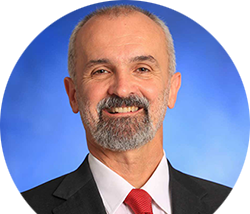
Abstract
Recent advances in sensor and wearable technologies with the advent of real-time Artificial Intelligence (AI) allows the creation of systems for continuous physiological monitoring and health assessment of users. However, this currently requires data to be transmitted to the cloud for processing by computationally heavy models. Instead, real-time analysis by the wearable device would reduce communication transmissions, improve energy usage, and provide immediate feedback to the user. We have demonstrated that AI models trained using Big Data datasets on larger platforms can be optimized and deployed on Internet of Medical Things (IoMT) intelligent sensors. Our evaluation of Artificial Intelligence models using the MIT-BIH dataset to identify heartbeat abnormalities found that a model optimized for embedded systems was above 93% accurate with minimal impact on energy usage of the IoMT device. We present analysis of performance and power profiling of implementation on ESP32 wireless sensor platform.
Biography
Prof. Emil Jovanov is Professor in the Electrical and Computer Engineering Department at the University of Alabama in Huntsville. He received his Dipl. Ing. and M.S. degree in Electrical Engineering, and PhD in Computer Engineering from the University of Belgrade. He is recognized as the originator of the concept of wireless body area networks for health monitoring and he is one of the leaders in the field of wearable health monitoring. His research interests include Wearable health monitoring, IoT (Internet of Things), wireless and sensor networks, ubiquitous and mobile computing, and biomedical signal processing. Dr. Emil Jovanov is an IEEE Fellow, and serves as a member of IEEE EMBS Technical Committee on Wearable Biomedical Sensors and Systems, IEEE Open Access Journal of Engineering in Medicine and Biology, IEEE Journal of Biomedical and Health Informatics, and IEEE Transactions on Biomedical Circuits and Systems, and Editorial Board member of Applied Psychophysiology and Biofeedback. He published more than 220 papers, 18 book chapters, and 13 U.S. patents.
Chair:
- Nenad Filipović, University of Kragujevac
Organizing Committee:
- Miloš Kojić, Serbian Academy of Sciences and Arts
- Miloš Đuran, Serbian Academy of Sciences and Arts
- Vesna Ranković, University of Kragujevac
- Vladimir Ranković, University of Kragujevac
- Dragan Đurčić, University of Kragujevac
- Dušan Teodorović, Serbian Academy of Sciences and Arts
- Zoran Lj. Petrović, Serbian Academy of Sciences and Arts
- Steva Todorčević, Serbian Academy of Sciences and Arts
- Vladan Devedžić, Serbian Academy of Sciences and Arts
Local Organization:
- Tijana Geroski, University of Kragujevac
- Smiljana Tomašević, University of Kragujevac
- Aleksandra Vulović, University of Kragujevac
- Anđela Blagojević, University of Kragujevac
- Ognjen Pavić, University of Kragujevac
- Lazar Dašić, University of Kragujevac
- Đorđe Dimitrijević, University of Kragujevac
- Dalibor Nikolić, University of Kragujevac
- Igor Saveljić, University of Kragujevac
- Milica Kaplarević, University of Kragujevac
- Milena Đorđević, University of Kragujevac
- Marija Gačić, University of Kragujevac
- Neda Vidanović Miletić, University of Kragujevac
- Branko Urošević, School of Computing, Union University
- Boban Stojanović, University of Kragujevac
- Miloš Ivanović, University of Kragujevac
- Branko Arsić, University of Kragujevac
Program Committee:
- Martin Aleksandrov (TU Berlin, Germany)
- Sandra Avila (University of Campinas (Unicamp), Brazil)
- Christian Blum (Spanish National Research Council (CSIC), Spain)
- Carlos Cardonha (University of Connecticut, United States)
- Vinay Chaudhri (United States)
- John Chinneck (Carleton University, Canada)
- Andy Chun (City University of Hong Kong, Hong Kong)
- Andre Augusto Cire (University of Toronto, Canada)
- Bradley Clement (Jet Propulsion Laboratory, United States)
- Dubravko Ćulibrk (University of Novi Sad, Serbia)
- Veljko Milutinović (University of Kragujevac and University of Belgrade, Serbia)
- Diane Cook (Washington State University, United States)
- Gabriella Cortellessa (CNR-ISTC, National Research Council of Italy, Italy)
- Lizhen Cui (Shandong University, China)
- Akay Metin (University of Houston, USA)
- Allen Robert (University of Southampton, UK)
- Zoran Bosnić (University of Ljubljana, Slovenia)
- Zlatan Car (Univeristy of Rijeka, Croatia)
- Ciaccio Edward (Columbia University, USA)
- Themis Exarchos (University of Ioannina, Greece)
- Dimitrios Fotiadis (University of Ioannina, Greece)
- Nikola Jorgovanović (University of Novi Sad, Serbia)
- Zoran Marković (IIT, Serbia)
- Michalopoulos George (University of Pittsburgh, USA)
- Nikita Konstantina (National Technical University of Athens, Greece)
- Zoran Obradović (Temple University, USA)
- Ouzounis Christos (King’s College, UK)
- Pattichis Constantinos (University of Cyprus, Cyprus)
- Sheu Phillio (University of California, USA)
- Stojanović Radovan (University of Montenegro, Montenegro)
- Miroslav Trajanović (University of Niš, Serbia)
- Tsiknakis Manolis (Hellenic Mediterranean University, Greece)
- Yang Guang-Zhong (Imperial College London, UK)
- Zervakis Michalis (University of Crete, Greece)
- Andre de Carvalho (University of São Paulo, Brazil)
- Luca Di Gaspero (DPIA – University of Udine, Italy)
- Matthew Gaston (Carnegie Mellon University, United States)
- Carmen Gervet (Université de Montpellier, France)
- Odd Erik Gundersen (Norwegian University of Science and Technology, Norway)
- Koen Hindriks (Vrije Universiteit Amsterdam, Netherlands)
- Neil Jacobstein (Singularity University, United States)
- Binbin Jia (Southeast University, China)
- Elias Khalil (Georgia Institute of Technology, United States)
- Lars Kotthoff (University of Wyoming, United States)
- Hoong Chuin Lau (Singapore Management University, Singapore)
- Jimmy Lee (The Chinese University of Hong Kong, Hong Kong)
- Lee Mccluskey (University of Huddersfield, United Kingdom)
- Felipe Meneguzzi (Pontifical Catholic University of Rio Grande do Sul, Brazil)
- Mitra Nasri (Delft University of Technology, Netherlands)
- Barry O’Sullivan (University College Cork, Ireland)
- Michael Orosz (University of Southern California Information Sciences Institute, United States)
- Simon Parsons (University of Lincoln, United Kingdom)
- Andrew Perrault (Harvard University, United States)
- David Pynadath (University of Southern California, United States)
- Claude-Guy Quimper (Laval University, Canada)
- Howard Shrobe (Massachusetts Institute of Technology, United States)
- Madhav Sigdel (University of Alabama in Huntsville, United States)
- David Stracuzzi (Sandia National Laboratories, United States)
- Dimitris Stripelis (University of Southern California, United States)
- Nirmalya Thakur (University of Cincinnati, United States)
- Kevin Tierney (Bielefeld University, Germany)
- Michael Trick (Carnegie Mellon University, United States)
- Pradeep Varakantham (Singapore Management University, Singapore)
- Deng-Bao Wang (Southeast University, China)
- Shinjae Yoo (Brookhaven National Laboratory, United States)
- Yingqian Zhang (Eindhoven University of Technology, Netherlands)
- Dubravko Ćulibrk (University of Novi Sad, Serbia)
- Jovan Stojanović (Serbian AI Society, Serbia)
- Stefan Badža (Serbian Government, Serbia)
AAI2023 Paper Publication
After the conference, invited papers presented at the conference will be published in the Applied Artificial Intelligence II- Learning and Analytics in Intelligent Systems, Springer. Only full papers will be accepted for publication.
